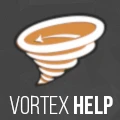FNV General Mod Use Advice
Contents
Overview
If you are new to using "mods" with games on the PC, or just want some tips on how to quickly get using mods with "Fallout New Vegas" (or FNV as it is known) with the least amount of hassle, this is the place to start. This article broadly covers things you should know, and points you to more in-depth articles on particular subjects.
Terminology
A "mod" is a package (archive) of related files that make some change to the vanilla game (as delivered by the publisher). Within a "mod" package are a number of "asset files" which add to or replace the existing vanilla assets (meshes, textures, sounds, animations, XML files, etc.), and one or more "plugin files" that tell the game about the existence and use of the new assets and where they are placed in the game. The "plugin" files are the only ones that appear in the "load order", which determines the sequence in which the game engine loads them into the game from the "top" (lowest numbered) to the "bottom" (highest numbered) position in the sequence. "Plugin" files have one of two possible file extensions: ESM and ESP. There is generally only one ESM file, but there may be any number of ESP files (including none). The ESM files are loaded first, and are considered "masters" to the ESP files that depend upon them. You should find all of your ESM files at the top of your "load order".
"Modding" refers to both the process of playing the game with mods installed, and to creating such mods. More properly we should distinguish between "mod users" and "mod creators", but most people rely upon the context in which the term is used rather than explicitly stating which is meant.
"Post Processing" is used in the video and film industry to improve the quality of images once they have been processed. In real-time 3D games, they are applied to the rendered effects to supplement the game engine.
According to Wikipedia:
Instead of rendering 3D objects directly to the display, the scene is first rendered to a buffer in the memory of the video card. Pixel shaders and optionally Vertex shaders are then used to apply post-processing filters to the image buffer before displaying it to the screen. Some post-processing effects also require multiple-passes, gamma inputs, vertex manpulation and depth buffer access. Post-processing allows effects to be used that require awareness of the entire image (since normally each 3D object is rendered in isolation).
There is a whole host of effects that can be produced. See the sub-topic Post processing shaders if this interests you.
First Timer Advice
There is an excellent set of advice for those new to modding "Fallout: New Vegas" (FNV) Fallout New Vegas Beginners Guide to modding ("sticky" at the top) which covers the essential tools you will need, such as LOOT for sorting your "load order".
Like most automated tools, LOOT is not 100% accurate; yet it is infinitely better at determining a correct load order for a large number of mods than anything other than manually examining each mod in an editor like 'xEdit' and building such an order by hand (each time you add or remove a mod). For the beginning mod user, it is essential to resolve most fatal mod conflict problems. LOOT does provide the "metadata" mechanism that allows you to customize it's sorting to preserve such adjustments as you determine necessary. Read it's documentation to exploit all of it's capabilities.
Note in particular the advice to install one mod at a time and test it thoroughly before the next mod. This, and that you install your Steam games to some folder OTHER than the default of "C:\Program Files", are pretty much universal for a solid, stable game.
If you have already installed Steam to "C:\Program Files", read the Installing Games on Windows Vista+ article which has a link to the official Steam guide to moving already installed Steam games. (Yes, you will need to "re-install" them so the Windows registry entries are correct, but you can still use your "saved game files".) As painful as this may sound, this one step will solve most "strange" problems not related to a mod conflict, and you will no longer need to run your games as an administrator. It is never easier to do than now, and you don't need to move all your Steam games at once.
Mod Managers
While a "mod manager" is not required it does make organizing your modded game much more manageable if you have more than a dozen files. This is especially true when trying to keep the "install order" (which deals with overwriting files of the same name) separate from the "load order" (which relates to the order in which the game reads in mod plugins). There are several choices such as:
- Nexus Mod Manager (NMM),
- Fallout Mod Manager (FOMM),
- Fallout Mod Manager - Forked a newer "variation" (different version) of FOMM,
- Mod Organizer (MO),
- Wrye Flash is the FNV version of "Wrye Bash" and creates the "Bashed Patch" mentioned. WF/WB is a "swiss army knife" sort of tool, but if you follow the Wrye Bash Pictorial Guide you can get functional with it quite quickly. The most essential parts are the "Mods" tab for your "load order" and "bashed patch", and if you intend to use it as your mod manager: the "Installers" tab (known as BAIN) for managing your installed mod packages.
Neither version of FOMM seems to be updated any more but both are usable, and the other managers are still actively supported. NMM is still technically in "beta" status but is fully functional. MO is part of the S.T.E.P. project and they have their own install guide for FNV Fear & Loathing in New Vegas (FalloutNV) here which walks through the complete process very well. (It's the one I used quite successfully when I started FNV, even though I used WF instead of MO.)
Smaller Plugin Cap
Be aware that there is a limit to the number of mod plugins (ESM and ESP files) you can have active at the same time. ("Active" meaning the file is present in the game "Data" folder with an ESM/ESP file extension.) This is common for Gamebryo engine games, but the cap is much smaller for FNV than players of other Bethesda games are used to. The patched game has a hard-coded warning when you exceed 139, but in practice this cap is anywhere between 130-140 depending upon your system. "Strange things" happen when you exceed this cap, such as textures looking weird (missing, or solid or "wrong" surface colors) and the game crashes. Again, installing and testing one mod at a time, especially as you near or exceed 130 active mods, is the best way to tell where this limit is for your situation.
There are ways to get around this limitation by "merging" plugins. See the wiki article Merged Plugin Guidelines for Personal Use for a description of the process.
Game won't launch
Or get past the "loading screens" to the game's Main Menu.
See the wiki article Fallout NV Troubleshooting Guide for tips on getting the basic vanilla game to launch. If you can't manage that, you have a major problem and most likely need to re-install the game outside of the "C:\Program Files" tree as suggested in the First Timer Advice sub-topic in this article.
If the vanilla game (no active mods) launched without problem, most likely you have a Missing Masters problem.
Missing Masters
See the Missing Masters wiki article for detailed instructions on identifying and resolving this issue.
Mod Conflict Troubleshooting
When you run into problems (which you will inevitably) there is the wiki article Fallout NV Mod Conflict Troubleshooting. It will help you narrow down the most commonly asked questions so you can get more directed help faster. It also contains links to all sorts of essential tools and stability mods, as well as some specific problems and solutions.
Modding a game takes time if you want the mods to work well together and be stable. Rushing the process will invariably lead to problems. Take the time to read and learn about the many new things that are involved, and you will have a much more enjoyable game when you are finished with the preliminaries.
Post processing shaders
Within the Bethesda gaming community the primary two graphic enhancements other than texture replacements used are: the ENB Series and the SweetFX Suite of shaders (though others exist). They are "post processing" effects to enhance the graphic feel of the game as the cost of some processing power and "frames per second"(FPS). Their installation can make changes to the INI files in your "User" account folder.
I would suggest you skip them for the time being, until you get a stable game going. If your average FPS is below 30, any post process shader is going to be a massive hit according to Steam Community thread. Only if you are then still interested, the following may be helpful.
They are two different approaches to the same issue and can be used together if your system can handle the load. (Though likely you will have to learn the meaning of the configuration settings to deal with potential conflicts between them, they are considered generally complementary.)
The "ENB Series" is developed by Boris Vorontsov and consists of a version for a specific game, and is available in either a "wrapper" or "injector" format depending upon which your system and game needs to work. The site for downloading the driver series is ENBDEV.
The "SweetFX" is a "shader suite" that uses an "injector" called "ReShade". Reshade and SweetFX are described in the article How To: Anti-Aliasing/Shader Injection (SweetFX, GeDoSaTo, GEMFX, and ReShade) along with a couple of others. Download SweetFX Suite (including ReShade) here.
And then there are various "presets" for both available for download from the Nexus, which are specific configurations developed by the authors and users to produce specific graphic atmospheres. These are a matter of personal preference.
HUD-UI-Menu Issues
Most of us sooner or later end up installing a mod that makes some change to the "Heads Up Display" (HUD), "User Interface" (UI), or some of the game's Menus. See the HUD-UI-Menu Issues wiki article before you do so, and avoid potential problems.
References
- Wikipedia
- Fallout New Vegas Beginners Guide to modding
- Installing Games on Windows Vista+
- Nexus Mod Manager (NMM),
- Fallout Mod Manager (FOMM),
- Fallout Mod Manager - Forked a newer "variation" (different version) of FOMM,
- Mod Organizer (MO),
- Wrye Flash is the FNV version of "Wrye Bash" and creates the "Bashed Patch" mentioned. WF/WB is a "swiss army knife" sort of tool, but if you follow the Wrye Bash Pictorial Guide you can get functional with it quite quickly. The most essential parts are the "Mods" tab for your "load order" and "bashed patch", and if you intend to use it as your mod manager: the "Installers" tab (known as BAIN) for managing your installed mod packages.
- Fear & Loathing in New Vegas (FalloutNV)
- Merged Plugin Guidelines for Personal Use
- Fallout NV Troubleshooting Guide
- Missing Masters
- Fallout NV Mod Conflict Troubleshooting
- Steam Community thread
- ENBDEV
- How To: Anti-Aliasing/Shader Injection (SweetFX, GeDoSaTo, GEMFX, and ReShade)
- SweetFX Suite
- HUD-UI-Menu Issues
Nexus wiki articles referred to by this article:
- Installing Games on Windows Vista+
- Merged Plugin Guidelines for Personal Use
- Fallout NV Troubleshooting Guide
- Missing Masters
- Fallout NV Mod Conflict Troubleshooting
- HUD-UI-Menu Issues
Nexus wiki articles that refer to this article:
- <none>





